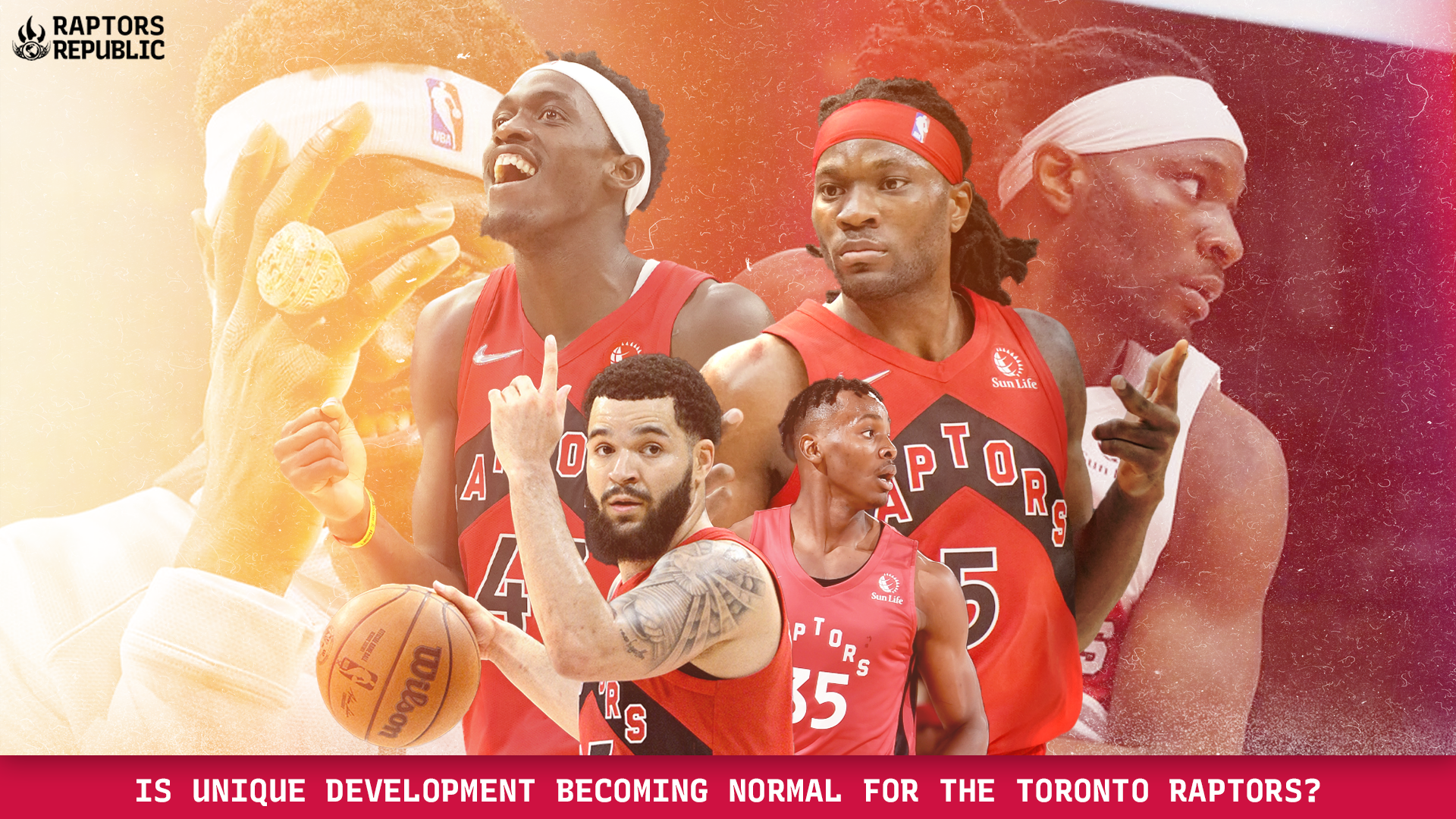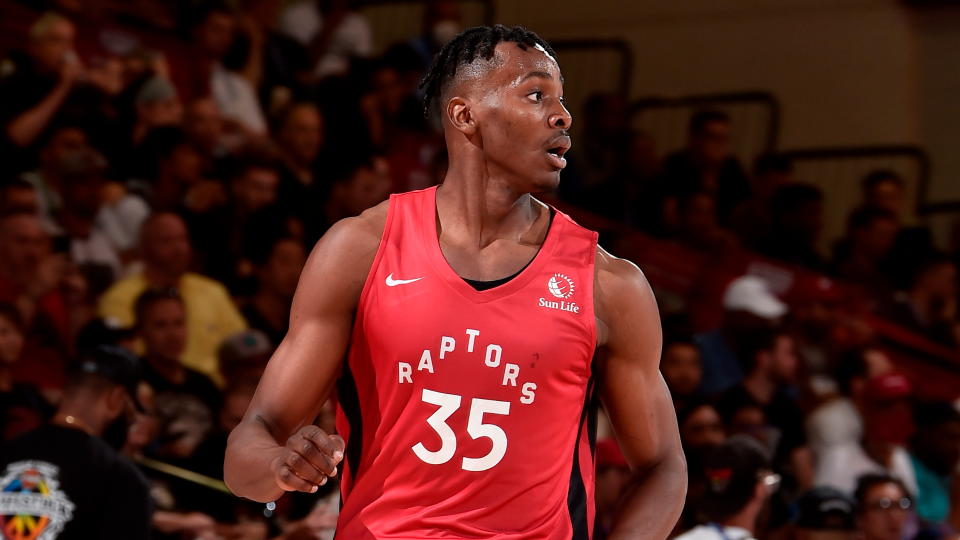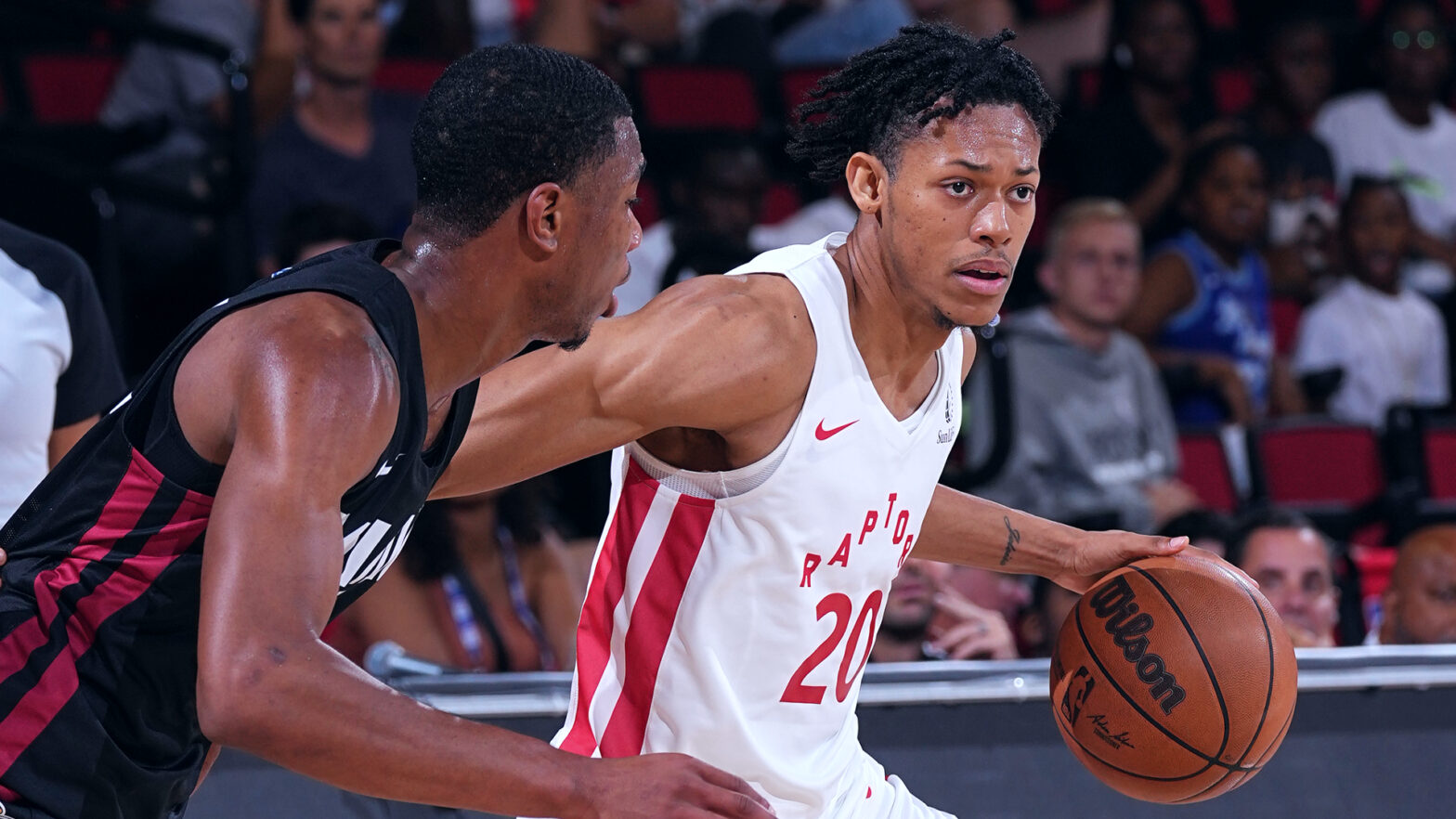When my son was born, the first children’s book I read to him was Cars, Trucks and Things That Go by Richard Scarry. The book follows a family of pigs as they travel to a picnic. The journey takes a long, long time. It’s scattered and deep, with enough hidden joy that I still find new plot points and gleeful jokes and clever wordplay on my thousandth readthrough. Because this was my first exposure to children’s picture books, Scarry convinced me that the category was full of literary masterpieces. That’s not the case. Such works of genius and generosity are incredibly rare; the genre is populated more by stunted sentences, shallow characters, and inexplicably boring happenings. Scarry made me believe the exceptional was the ordinary.
The Toronto Raptors are in the midst of convincing their fans the same thing, that the unique is commonplace. Take Pascal Siakam, for example. Chosen 27th overall in the 2017 NBA draft, Siakam has continually shattered ordinary expectations. Most players taken at the end of the first round are out of the league within a few years. Siakam, on the other hand, is already sixth in total win shares among all players ever selected 27th. But he wasn’t a star out of the gate; he was an overexposed rookie starter in 38 games and scored 4.2 points per game. He was limited to midrange catch-and-shoot jumpers, transition runouts, offensive rebounding, and the occasional foreshadowing spins to the rim. Then he won Most Improved Player of the Year in his junior year as he became one of the most efficient secondary-or-tertiary scorers in the league. Oh, and then by 2021-22 he had became an efficient first option in the half-court while leading the NBA in isolations and or more or less taking one of the hardest shot diets in the league while surrounded by some of the shakiest spacing. That’s against a lot of odds, even great ones provided by parisportif.ca.
That’s not normal, but for the Raptors, it’s starting to feel that way.
Siakam is far from Toronto’s only development success. There have been plenty of lesser developmental stories: Norman Powell’s shooting, OG Anunoby’s shooting, other non-shooters’ shooting development, so on and so forth. Gary Trent jr. went from a total defensive nonfactor (in Khem Birch’s own words!) to a ball-stealing demon. Fred VanVleet’s story is close to as unprecedented as Siakam’s; he became only the fifth undrafted player to become an All Star in NBA history. His is decidedly not what a usual career arc looks like.
Now Precious Achiuwa has added another outrageous chapter to the annals of Raptors’ developmental history. If Siakam’s growth was that of sustainability, wind and solar, rinse and repeat over several seasons, expanding naturally as he took on greater and greater responsibilities, then Achiuwa’s was nuclear fusion, slamming skill and athletic evolution together like burning fire atoms in the sun, accomplishing in a week or a month what most players need years to achieve. In October and November to start the year, he shot 39.7 percent from 2-point range and 28.0 percent from deep. Very bad numbers for a starting center! And the tape often looked worse on the offensive end than the numbers.
And yes, the numbers improved for Achiuwa. Over the last three months of the season, Achiuwa shot 49.0 percent from 2-point range and 40.4 percent from deep. But numbers hardly show the totality of a player’s improvement. Progression is a static and metallic thing in percentages. Numbers aren’t alive like a player’s game. Achiuwa’s nuclear growth was far more pronounced on the court than a few percentage points gained here and there.
Achiuwa’s ability to harness his athleticism took leaps and bounds in the season, with his balance perhaps most of all taking the Hercules route from zero to hero.
His actual skills — the moves he used — progressed massively, perhaps best shown by his in-and-out dribble early in the season finding him completely lost under the rim becoming in the playoffs a weapon to dust an elite defense.
With growth in all areas, including awareness of where his touches should come and what to do with them, Achiuwa’s usage sported entirely different textures by the end of the season, and he did entirely different things with the ball. These aren’t the same player, and the difference in two plays is miniscule in percentage points, but it requires so much — growth in balance, awareness of the game, skills, and so much more — to actually manifest on the court.
Achiuwa’s improvement culminated in a Game 5 against the Philadelphia 76ers in which he repeatedly attacked Joel Embiid in isolation and lost him with ease. That’s something maybe only a tiny handful of NBA players can do. Achiuwa proved to be one of them, which is all the more impossible considering he was lost on offense early in the year. Growth like that, once again, is not normal.
Siakam’s evolution has been consistent and natural for half a decade at this point. First he added complementary skills: corner shooting, cutting, finishing. Then he added some self creation close to the rim, then in isolation, in the post, in the pick and roll. He’s become an outrageously talented passer. He didn’t try the more difficult skills until he was ready for them. His game has been built layer by layer, adding the more difficult components after the easier ones are mastered, a rubber-band ball of spins and hooks and floaters and “And-1s!!!”. The unique element of Siakam’s “grown in a lab” process is that he did keep getting better the whole time, just as opportunity for more and more responsibility opened for him. Player and team context co-created one another. Achiuwa’s development was crammed into a matter of months, violent, growing akimbo, mastering the game of basketball like Neo’s “I know Kung Fu.” He was trying the most difficult things on the court from day 1, and it was far from guaranteed that he’d actually figure them out. It’s unreasonable to expect his rate of improvement to maintain — he’d be, by a wide margin, the greatest player in history by the time he was 30. Even though the two of them are unique cases, bearing little resemblance to one another, they share the simple quality that that they have expanded their basketball games in ways that are basically unrepeatable by anyone, ever.
That has a number of impacts. On one hand, it means as the rest of the league searches for “The Next Pascal Siakam,” other general managers will be shit out of luck. There’s only one Ty Crane. Similarly, players can’t follow in the footsteps of VanVleet — to which Terence Davis can attest. And as Siakam has ascended to superstardom, his incomparability has largely become recognized. Next, the search for “The Next Precious Achiuwa” will begin. But Achiuwa is unique, like Siakam was before him, and player comps are harmful ways of understanding individual NBA players anyway.
Which brings us to Christian Koloko. He had a complex Summer League. He finished seventh in all of Summer League in blocks per game, averaging 2.2. He averaged 1.8 steals per game besides. His defense was stupendous, showing athletic abilities far beyond the environment. He has quick hands and feet, incredible balance, and enormous length. All of those qualities, it is worth mentioning, were shared by Siakam and Achiuwa before their offensive outbursts. Similarly, Koloko’s offensive game is a question mark. He averaged 7.8 points per game and shot very poorly from the floor. The similarities are uncanny.
But just because players share certain qualities in common does not mean they will share the same futures. To expect Koloko to follow in the footsteps of Siakam or Achiuwa is outrageous — the same level of ridiculousness as exposed by fans and media members of other teams when a few years ago they expected Jonathan Isaac or Jarred Vanderbilt or other tall, rangy, athletic forwards to follow in the footsteps of Siakam. It’s a truism for a reason: no two players are the same. If Koloko does become a serviceable NBA player, or a starter, or perhaps even a star, it will be by following a road entirely his own. There is no previously paved path for him to follow, and trying to be Siakam or Achiuwa would do him a disservice.
It’s likely the Raptors selected Koloko because they believe he can grow into a quality NBA player, and the team has certainly shown an aptitude to help players along the way. But where does the center of the complex matrix lie? In other words, are the Raptors better at identifying players who can grow in unique ways, helping players grow in unique ways, or are they just lucky? It’s almost impossible to say from an outside perspective; furthermore, in trying to pinpoint the value share in those categories, it’s all too easy to fail to praise the players themselves, for they always deserve the lion’s share for their own career trajectory — and in the same vein so too is it too easy to condemn the players, the Bruno Caboclos, who are unable to mimic what other players accomplished. Don’t let your expectations of Koloko — created almost entirely by the shared uniquenesses of Raptors not Koloko — ruin your experience of the rookie center.
After reading the vocal majority of children’s books, I have become only more appreciative of Richard Scarry. For every Go, Grandma, Go! and Polar Bear, Polar Bear, What Do You Hear?, I enjoy all the more the nuances of Goldbug and Maniacbug, the chase between Officer Flossy and Dingo, and the incredible journey through hell and high water to get to a family picnic. I was spoiled and didn’t know it. So too are Raptors fans. Koloko will find his own way in the NBA, and if he doesn’t form a four-headed monster of development alongside Toronto’s most vivid examples, don’t condemn him. Simply appreciate Siakam, VanVleet and Achiuwa all the more for what they have accomplished.




